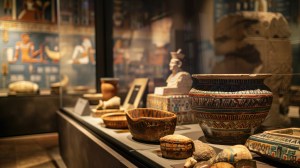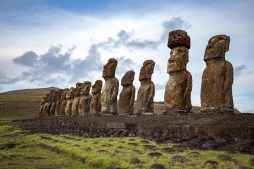The Secrets of the Sea Peoples: Understanding Their Significance in Archaeology
The Sea Peoples are a fascinating and mysterious group that has captured the attention of historians and archaeologists alike for centuries. Their significance in ancient history, particularly during the late Bronze Age, sheds light on the complexities of trade, warfare, and cultural interactions in the Mediterranean. In this article, we will delve into who the Sea Peoples were, their impact on ancient civilizations, and what archaeological findings reveal about their story.
Who Were the Sea Peoples?
The term ‘Sea Peoples’ refers to a confederation of maritime raiders who attacked ancient Mediterranean civilizations around 1200 BCE. While their precise origins remain uncertain, theories suggest they may have come from various regions including Aegean islands, Anatolia (modern-day Turkey), or even further afield. Notable groups among them include the Sherden, Shekelesh, and Peleset. They are often depicted in Egyptian inscriptions as formidable adversaries during Pharaoh Ramses III’s reign.

The Rise of Maritime Power
As trade networks expanded across the Mediterranean during the Bronze Age, so did maritime activities by various cultures. The rise of these sea-faring societies is believed to correlate with economic shifts that created both opportunities for trade and vulnerabilities ripe for exploitation. The Sea Peoples capitalized on these dynamics through piracy and raids—contributing to widespread instability that ultimately led to significant societal collapse across many coastal territories.
Impact on Ancient Civilizations
The incursions by the Sea Peoples had profound effects on established civilizations such as Egypt, Hittite Empire, and Mycenaean Greece. Their attacks contributed to a period known as the Late Bronze Age Collapse around 1200 BCE when several powerful states experienced dramatic decline or total destruction. Archaeological evidence indicates widespread destruction layers in cities like Ugarit and Troy which correlate with documented invasions by these marauding forces.
Archaeological Evidence: Tracing Their Footsteps
Archaeologists have uncovered significant artifacts related to the Sea Peoples that help trace their movements and influence across ancient landscapes. Pottery styles distinct from local traditions were found alongside remnants of fortifications indicating conflict zones where battles occurred with local armies defending against these invaders. Additionally, inscriptions detailing encounters with Egyptian pharaohs provide invaluable context regarding their tactics and organization as military forces.
Legacy of Mystery: Continuing Research
Despite extensive research over decades into this enigmatic group known as the Sea Peoples, many questions remain unanswered about their true origins or ultimate fate after they retreated from historical records following their attacks on established powers. Ongoing excavations combined with advances in technology such as DNA analysis promise new insights into understanding how they fit within broader narratives surrounding migration patterns during antiquity.
In conclusion, tracing the real story of the Sea Peoples reveals an intricate tapestry woven through conflict but also reflects broader themes common throughout human history—migration driven by environmental pressures leading societies towards interaction rather than isolationism. As archaeology continues unearthing more evidence about this formidable confederation’s impact upon our world today remains undeniably crucial.
This text was generated using a large language model, and select text has been reviewed and moderated for purposes such as readability.











